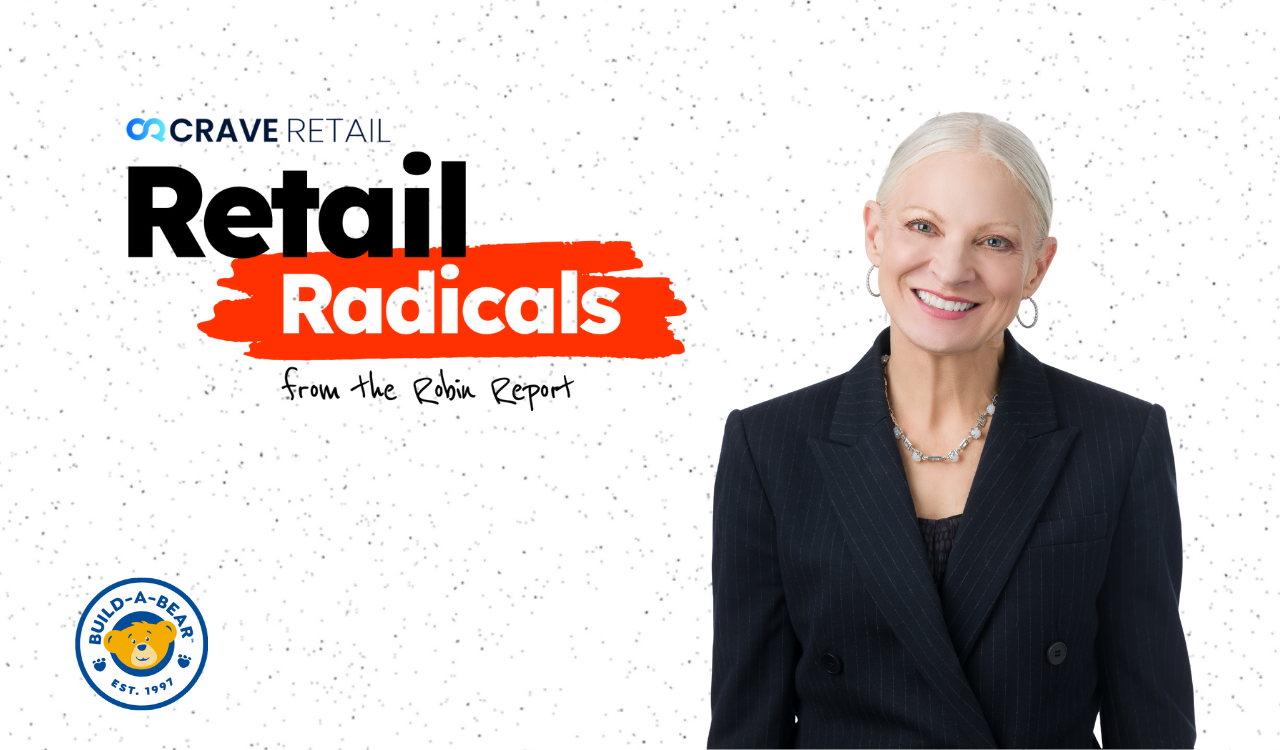If Kohl’s were a cat that had nine lives, it used up life #8 on May 1, 2025, with Ashley Buchanan’s termination. But before I offer up any opinions about Kohl’s future, if in fact, it has one, I feel compelled to share my past history and insight into the company. And it’s personal.
Kohl’s also needs a more appropriate balance of national branded and private label branded merchandise – national brands for legitimacy and promotional draw, and private label brands for comparative pricing legitimacy and gross margin performance.
The Past as Prelude
In the late 1970s, Kohl’s joined a retinue of retailers seeking to take advantage of a powerful emerging retail category, called at the time, “Junior Department Stores.” Kohl’s was a little-known grocery chain headquartered in a suburb of Milwaukee seeking newfound relevance and growth in the face of JC Penney’s sizable market share and the emergence of a newly acquired Dayton Hudson store called Mervyns. (Note: Mervyns originally had no apostrophe because when the company was first founded the sign builder left out the apostrophe which no one caught in time. When the mistake was discovered Merv Morris said leave it as he was too cash-strapped to fix it.) Circa 1981, I was a Senior VP/GMM of Men’s and Boy’s at California-based Mervyns, and then in 1983, President of its South-Central Territory based in Plano, Texas.
Back in the day. Mervyns was growing top and bottom lines in no small measure by carefully catering to a middle market customer’s desire for fashion and value. Customers enjoyed shopping in a well-located and well-presented store that also offered attractive credit through its own store card. Mervyns was a store that consistently carried exciting assortments of men’s, women’s, kids’ and home goods. This merchandise was carefully promoted every week in a very methodical way to have the entire store appear to be on sale while at the same time protecting a promotional-to-regular-price balance of 35 percent sale, 65 percent regular price. Mervyns’ secret sauce also included a mix of powerful national brands, hand in glove, with carefully crafted private label programs throughout the entire store.
Alas, Mervyn’s fell victim to overreach, ill-advised merchandising decisions, over-involvement on the part of its corporate parent and a greenmail attempt mounted in 1986/1987 against Dayton Hudson. I had to close Mervyns South Central territorial headquarters which I had opened. Over 30 stores in the Texas, Oklahoma, New Mexico and Louisiana area closed when the “Oil Patch” slid into recession coupled with weakness in Mervyns California base business.
Enter Kohl’s Stage Right
Kohl’s executives had been repeatedly shopping Mervyns’ stores in California and Texas, cameras and tape measures in hand. When over 600 Mervyns South Central Territory, Texas-based executives were laid off in 1986, Kohl’s swooped in and hired 49 of them. As Mervyns went into decline along with JC Penney and newbies like Federated Department Stores Mainstreet division (which was an attempted Mervyns knockoff), Kohl’s emerged with a newly crafted and improved operating playbook of their own. With success in hand, Kohl’s moved to rapidly open stores throughout the U.S.
My next encounter with Kohl’s was while serving as CEO of Cincinnati-based Lazarus, then a division of Federated Department Stores. Kohl’s opened clusters of stores in our midwest trading areas and immediately launched their Mervyns style weekly brand promotions. We operated in a similar promotional fashion but had to lower our promotional prices to remain competitive with them.
Cracks in Kohl’s Veneer
What I observed then were the seeds of Kohl’s eventual downfall, masked by the disappearance of Mervyns, the ongoing collapse of JC Penney and even Macy’s weaknesses as well. At that time in the mid-1990s, Macy’s was trying (and failing) to go upmarket and was moving away from Kohl’s mid-market customers.
Notably, Kohl’s was adding more and more brands to fuel their weekly and biweekly promotional offers, while at the same time beginning to violate comparative pricing rules adjudicated at state levels. In a nutshell, they were beginning to over-assort their stores and were blatantly over-rotating their price promotions across the calendar.
Kohl’s became known as a store that never turned down a brand that they could somehow force onto their selling floor and onto their promotional calendar. Despite this poor stewardship, for quite a few years Kohl’s appeared to remain at the top of the retail leaderboard in comparable store sales, month after month, quarter after quarter, and year after year. To Kohl’s credit their central checkout format, which was very well received by customers, remained a powerful positive differentiator. But over assortment and balance of sale shifts toward 100 percent on-sale volume becomes the bane of a high/low driven promotional strategy and Kohl’s was no exception.
Kohl’s Shenanigans
Now, fast forward to 2004, while I was serving as CEO of Sears Canada, Kohl’s CEO Larry Montgomery and President Kevin Mansell traveled to Toronto and, uninvited and unannounced, toured a handful of Sears Canada stores. Montgomery and Mansell liked what they saw in Canada and as a result aggressively sought to meet with me. To provide context, at that time I had enormous misgivings about what was beginning to transpire with piratical Eddy Lampert, a substantial Sears Roebuck shareholder (which owned 51 percent of Sears Canada).
As a courtesy, I agreed to meet with Montgomery and Mansell during one of my regular trips to Chicago. The meeting took place in a suburban Chicago hotel, where Montgomery immediately offered me a job. He acknowledged what he had seen in Canada and what he had learned with respect to our efforts there to “detox” the company from several years of unsustainable promotional behavior. He freely admitted to the struggle that Kohl’s was facing in the U.S. in that same regard.
He more or less said, “Name your title and role and we will make it happen.” Before this meeting took place, I did do some due diligence as a cursory attempt to get up to speed on what Kohl’s was and was not doing at that time. No surprise to me, I quickly saw the corner that Kohl’s had been painting themselves into. I was flattered by Montgomery’s’ open-ended offer but immediately turned it down. I wasn’t looking for another assignment, let alone another turnaround in what would have been as a third chef in a kitchen whose recipes needed dramatic changes. Montgomery was very disappointed. Mansell was very relieved.
Sears CEO Alan Lacy got wind of this meeting and incorrectly accused me of conspiring to join Kohl’s. I was pushed out of Sears Canada shortly thereafter. In short order, Lampert acquired Sears Roebuck using Sears Roebuck’s own cash and merged the company with Kmart. Lacy was pushed out of Sears Roebuck, and the sickening demise of iconic, in the aggregate, $50 billion retail brands Sears Roebuck, Sears Canada and Kmart began in earnest.
Kohl’s Recent CEO History
Back to Kohl’s – Larry Montgomery eventually retired. Kevin Mansell became CEO and, in my view, merely acted as a caretaker to a troubled but outwardly successful strategy. He recruited, as an eventual successor, Michelle Gass, a marketing executive from Starbucks with no experience in fashion, multi-classification merchandising or promotional retailing. She eventually replaced him when he retired. Gass’ claim to fame as Kohl’s CEO was a less than meaningful deal with Amazon to make Kohl’s stores drop-off centers for Amazon returns. I always suspected, because of the warrants involved in the agreement with Amazon, that this deal was really an attempt by Gass to convince Amazon to buy the company.
Kohl’s performance continued to be, at best, lackluster. The Amazon returns strategy did not move the needle at Kohl’s in a meaningful way. During her tenure CEO Gass exhibited a consistent habit of blaming failure on her senior subordinates, which in my opinion is unacceptable. With the backing of a lead director, Peter Bonaparte, Gass fended off a series of activist efforts to remove her. To her credit, she did a deal to bring Sephora to Kohl’s from a bankrupted JC Penney. But unfortunately, as had been the case at Penney, this deal was far more valuable to Sephora than to its Kohl’s host.
Revolving Door
Once Gass was pushed out, Kohls’ hired the well-regarded former CEO of Burlington Stores, Tom Kingsbury to right the ship. Kingsbury also had little or no merchandising or promotional experience. He moved quickly to make major changes to Kohl’s strategies. But to no avail. By his own admission, he failed to understand the foundations of Kohl’s business and the changes he put in place just didn’t resonate with customers.
Kingsbury eliminated and/or scaled back categories such as women’s petites, fine jewelry and a host of embedded private label programs to make way for additional national brands. He did work toward cleaning up Kohl’s stores, inventories, and inventory and expense management practices etc. But it is more what he didn’t do that stalled Kohl’s business. Namely, focusing on a compelling, balanced and attractive mix of national brands and private label programs that would successfully differentiate Kohl’s from the competition. His mandate was to restore Kohl’s as a destination for its customers but he just didn’t accomplish that.
Recently, in January 2025 following Kingsbury’s departure, the company brought on board former Michael’s Stores CEO Ashley Buchanan. Prior to serving at Michael’s, Buchanan had served as a senior merchant at Walmart. He was viewed as a breath of fresh air considering Kohl’s ongoing, chronic poor performance.
Surprise, surprise, on May 1 Buchanan was terminated for cause for having engaged in a series of inappropriate transactions with a former business associate and personal friend. There is some evidence that the Kohl’s board was warned about Buchanan’s behavior before he was hired but we will have to wait for the inevitable litigation for all the details to be revealed.
An Indeterminate Future
Needless to say, Kohl’s now needs yet another new leader. This time it had better be someone with real and relevant chops who can quickly mount a transformation path leading to a successful turnaround strategy – one which will quickly turn this company around before it’s too late. My advice? Kohl’s needs powerful assortments of broad categories of merchandise, encompassing men’s, women’s, and kids’ apparel and accessories and important elements of soft home furnishings and housewares – notably the categories that made Kohl’s famous in the past.
Kohl’s also needs a more appropriate balance of national branded and private label branded merchandise – national brands for legitimacy and promotional draw, and private label brands for comparative pricing legitimacy and gross margin performance.
Next, and maybe most importantly, Kohl’s needs a far more powerful (and legal) promotional strategy that leans heavily on calendar management and calendar disciplines and introduces appealing deflective promotional efforts. Examples might include features such as purchase with purchase, gift with purchase, sweepstakes, points rewards, and other techniques to restore its promotional appeal and act as a regular draw for customers.
It also goes without saying that Kohl’s must have a successful ecommerce strategy that is hand and glove with what it is doing in its stores. This is not to imply that anything here is easy to contemplate or enact, but it is to say that, at the end of the day, successful retailing has always been, and always will be, about an organization led by leaders and teams with vision and executional capacity to create, present, and promote assortments that are compelling, profitable and replicable, season in and season out.
It’s an understatement to suggest that Kohl’s has its work cut out for itself. Maybe, just maybe, the company has a 9th life left.




